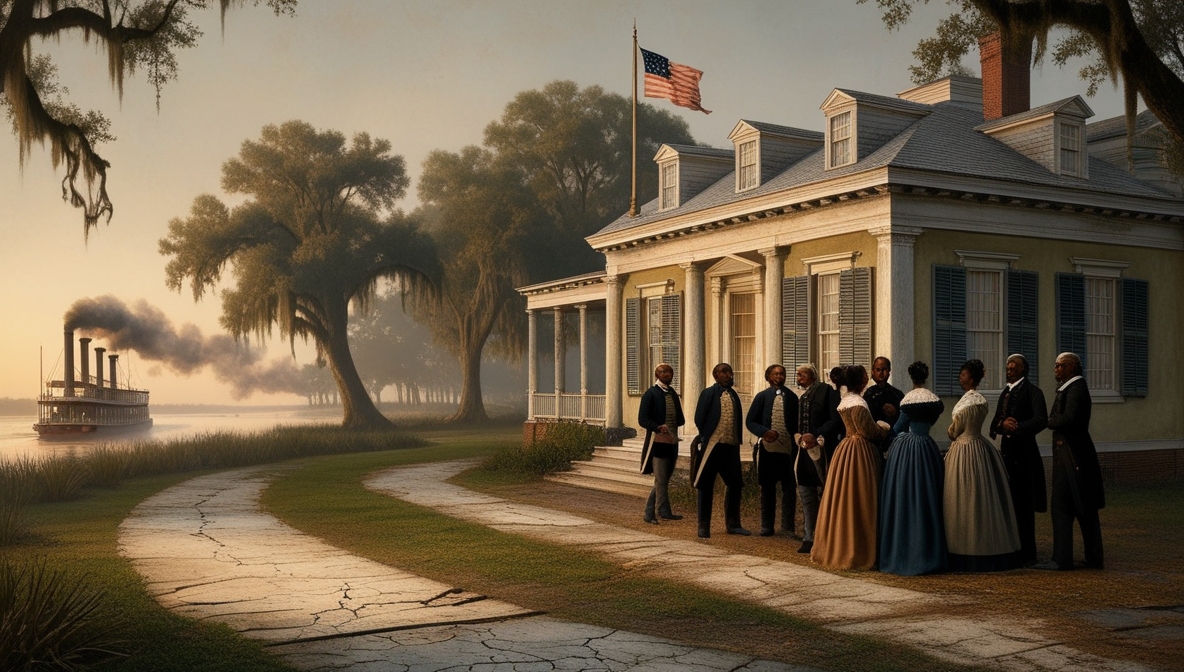
The Lowcountry region of South Carolina and Georgia was deeply affected by the Civil War. Its economy, society, and landscape underwent significant changes during and after the war. From the destruction of plantations to the abolition of slavery, the Civil War left a lasting mark on the region. This article explores the various impacts of the Civil War on the Lowcountry, from the fall of Charleston to the Reconstruction era.
The Fall of Charleston: A Turning Point
Charleston as a Strategic Location
Charleston was a key location during the Civil War due to its economic and military importance. The city’s port was vital for trade and the Confederate war effort. Fort Sumter, located in Charleston Harbor, became the site of the war’s first battle in 1861, marking the start of the conflict.
The Siege of Charleston
The city endured a lengthy siege by Union forces from 1863 to 1865, leading to widespread destruction. Artillery bombardments damaged homes and infrastructure, while Union blockades strangled the city’s economy. The fall of Charleston in February 1865 was a major blow to the Confederacy and marked the beginning of the end for the Southern cause.
The Destruction of the Plantation Economy
The Loss of Labor and Wealth
The Lowcountry’s economy before the Civil War was heavily dependent on the labor of enslaved Africans, who worked the region’s rice, cotton, and indigo plantations. The war led to the emancipation of enslaved people, effectively ending the plantation economy. Wealthy planters lost their workforce, and their land and assets were often destroyed or seized during the conflict.
Economic Ruin and Transformation
Many plantations were abandoned or fell into disrepair as the war ravaged the Lowcountry. The loss of enslaved labor and the destruction of fields and buildings caused an economic collapse. During Reconstruction, some plantations were converted into sharecropping operations or sold off in smaller parcels, leading to a transformation of the agricultural landscape.
Social Upheaval: The End of Slavery
Emancipation and the Freedmen’s Bureau
The Civil War brought an end to slavery in the Lowcountry, reshaping its social structure. The establishment of the Freedmen’s Bureau helped formerly enslaved individuals transition to freedom by providing education, housing, and legal assistance. However, this transition was fraught with challenges, including violence and systemic racism.
The Gullah Culture and Freed Communities
Freed African Americans in the Lowcountry formed close-knit communities, many of which preserved elements of their West African heritage. The Gullah people, who lived on the Sea Islands, maintained their language, traditions, and customs, which continue to be an essential part of the region’s cultural identity today.
Reconstruction and Its Challenges
Federal Occupation and Military Rule
After the fall of the Confederacy, the Lowcountry was placed under federal occupation during the Reconstruction period. Military rule was imposed to rebuild the region and integrate formerly enslaved people into society. This period saw the establishment of new laws aimed at providing rights to freed African Americans, though enforcement was often weak.
Political Struggles and Resistance
Reconstruction in the Lowcountry was met with resistance from many white residents who opposed the social changes brought by the war. Violent groups like the Ku Klux Klan emerged, seeking to undermine Reconstruction efforts and maintain white supremacy. The political landscape became deeply divided, with tensions that would shape the region for decades to come.
The Legacy of the Civil War in the Lowcountry
Historic Sites and Memory
Today, the legacy of the Civil War in the Lowcountry can be seen in its numerous historic sites and landmarks, such as Fort Sumter, Magnolia Cemetery, and Middleton Place. These sites serve as reminders of the war’s devastating impact and the struggles for freedom and equality.
Ongoing Economic and Social Impacts
The economic devastation caused by the Civil War and the end of slavery had long-term effects on the Lowcountry. The region’s recovery was slow, and the legacy of poverty, racial segregation, and inequality continued to affect its communities well into the 20th century. However, the cultural richness of the Gullah communities and the preservation of historical sites have helped keep the region’s history alive.
Conclusion: A Region Shaped by Conflict
The Civil War forever altered the Lowcountry region. Its economy, society, and landscape were transformed, leaving a complex legacy of destruction, resilience, and cultural preservation. Understanding the impact of the Civil War on the Lowcountry helps us appreciate its unique history and the ongoing effects of this pivotal moment in American history.